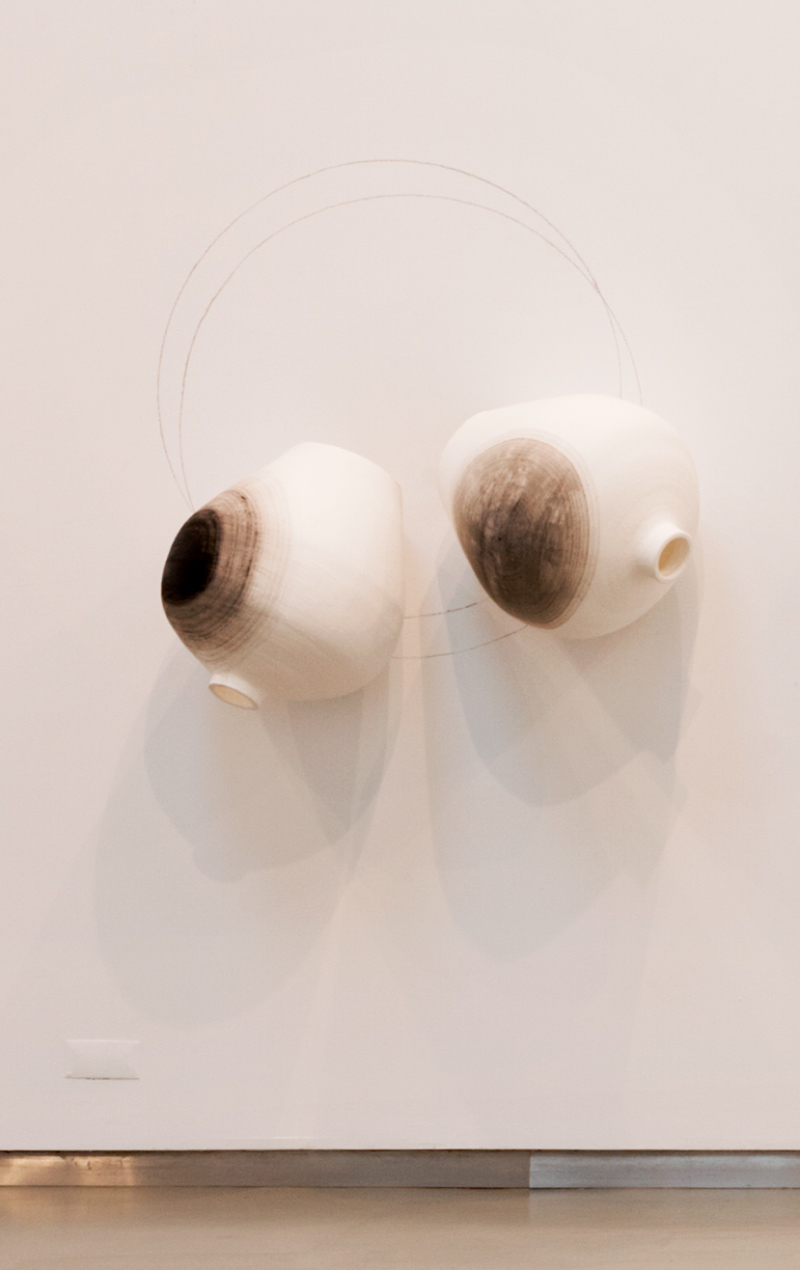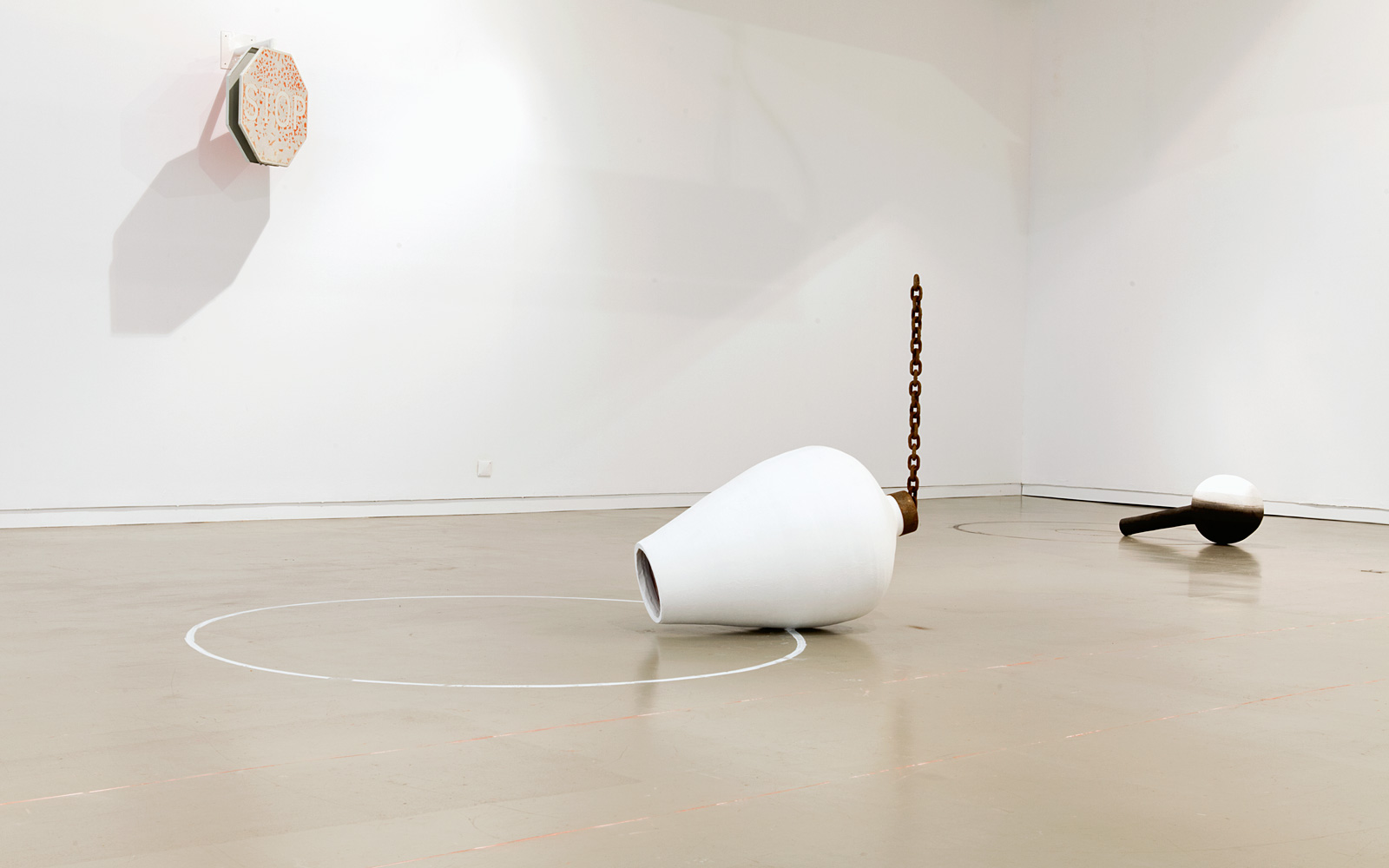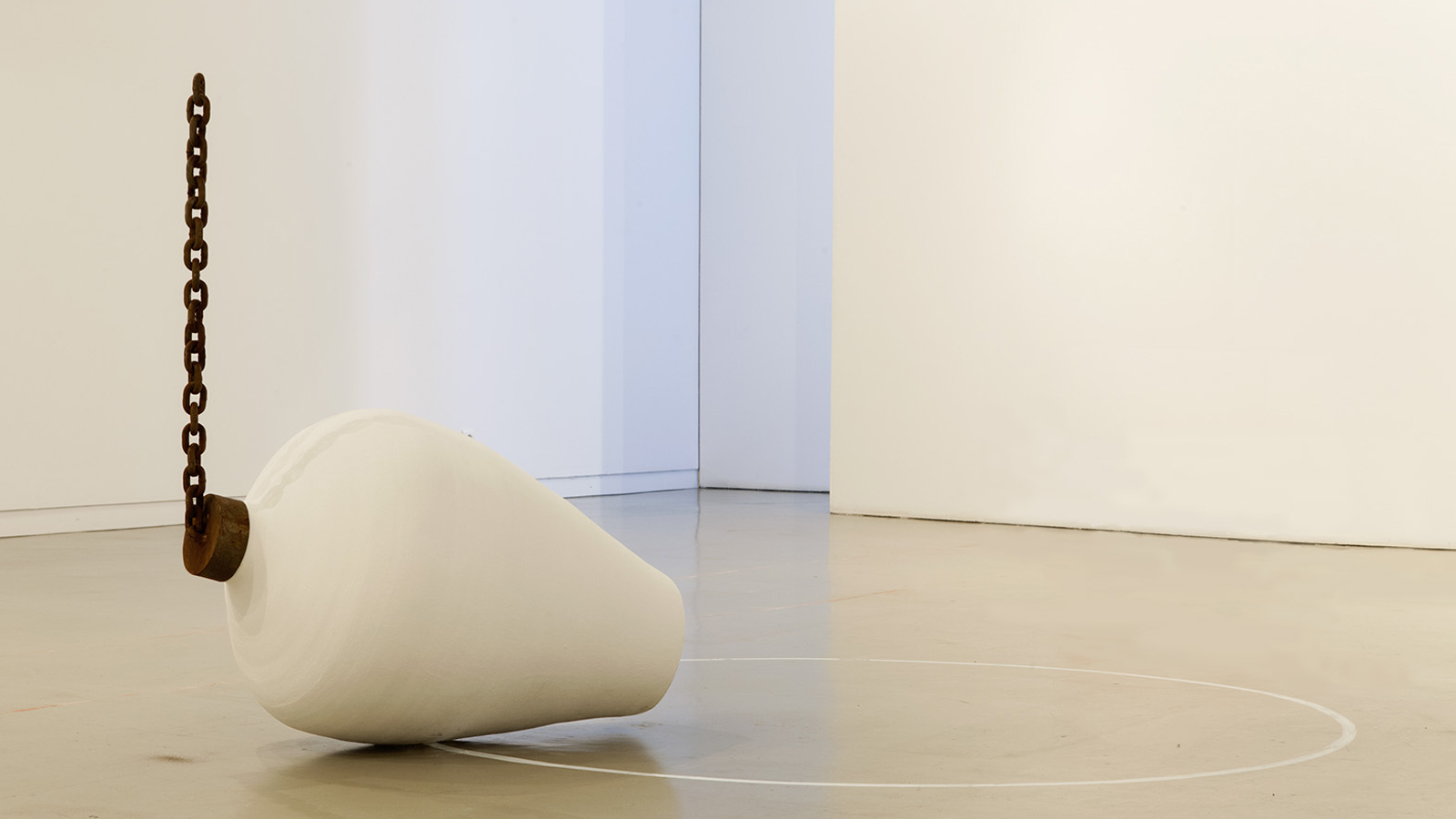New work by Inês Botelho
Inês Botelho has made her name working in sculpture, installation and drawing, suggestively connecting thoughts about space, objects, traditions, geometry, materials, forces and an imaginary world of artefacts and manual work.
The notion of gravity as a force that gives structure to the space and the bodies was also clearly present in the exhibition held in 2008 at Galeria Filomena Soares, significantly entitled Resistência/Desistência (Resistance/Withdrawal). ‘Letting yourself be taken by gravity means renouncing possession of a body and as a result renouncing the occupation of space,’ wrote the artist, at the time, in an interview with ArteCapital.


Presença Inflectida (Inflected Presence), in the same gallery in 2011, also reflected more broadly on the space-time relationship, questioning the concept and destabilising the idea of a centre and an axis from which all relative positions, scales and hierarchies are established. In this context, the experience of the subject is a dilemma between experiences and theories. Some of the drawings on display, in Indian ink, have titles such as Rotações em aceleração centrípeta-centrífuga (Centripetal-centrifugal accelerating rotations) or Rotações em aceleração centrípeta-centrífuga.
The work Acima de dois sóis (Above two suns) is clearly a preparation for the work we are now acquiring: the metal chain standing erect, contrary to all expectation of obedience to gravity, is common to both pieces.

The exhibition held in 2014 in the same gallery is entirely dedicated to the movement of matter through space and in it we find rotations and translations of three-dimensional objects, almost always in painted clay shaped on a potter’s wheel. With the title O Espaço diz à matéria como se mover e a matéria diz ao espaço como se curvar (The Space tells the matter how to move and the matter tells the space how to bend), it is clearly dedicated to the problems encompassed by physics and geometry: perspective, cardinal points, movement, orientation, scale, force, tangential lines, conical, spherical and cylindrical combinations, on the floor and on the wall, painting in concavities and convexities, emphasising the volume.
For the artist, the tension created by new points of view lends itself to the interrogation of the subject in relation to its centrality in the cosmos and the cyclical nature of time. For us, in terms of the acquired work, the chain suspended rigidly in the void and the inscription of the object (pot, receptacle, container) outside and inside the small circular territory favours the general perception that the laws of space and form are different and inconstant in another, non-linear dimension of that same cosmos.

